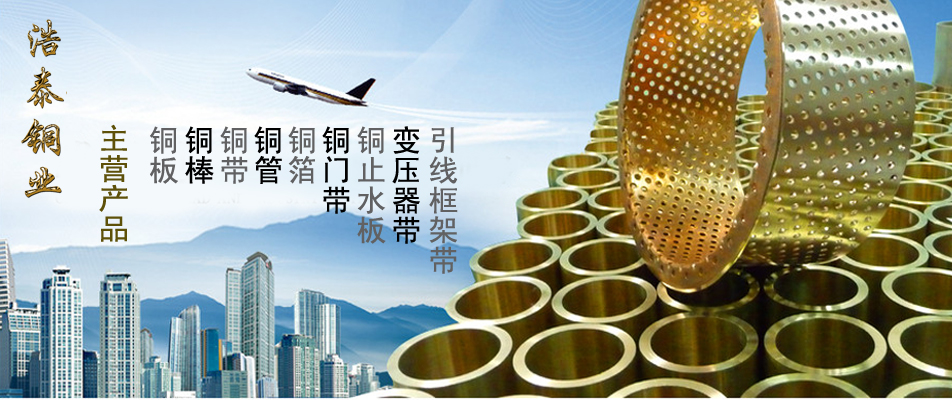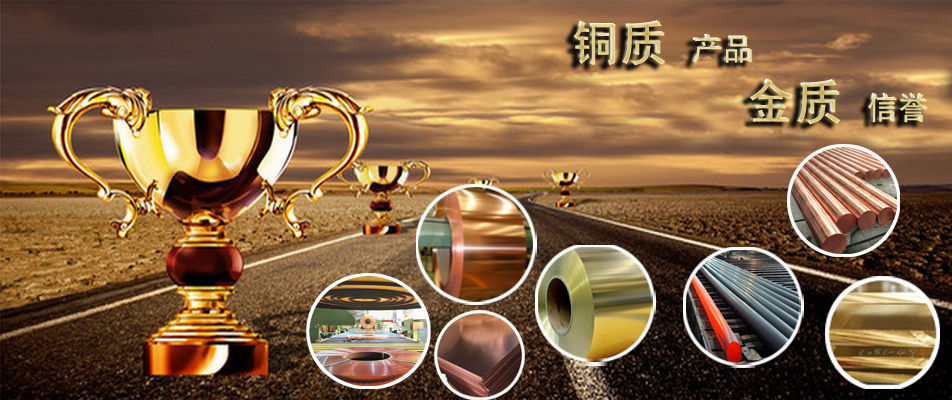Copper strip production process
TIME:2019-01-19CLICK:3008COME FROM:Los Copper, Copper Plate, Copper Strip, Copper Bar, Copper Tube, Copper Rod, Copper Foil, Copper Price, Haotai Copper
Copper belt is a very common metal element,often in electrical components,lamp caps,battery caps,buttons,seals,connectors and other places to see,the main role is conductive,heat conduction,corrosion resistance equipment.Copper strip production has six areas,respectively smelting furnace area,laboratory,cutting area,hot rolling area,washing area,rolling plate area.Below small make up and everyone about the copper strip production process,production methods of cold rolling and hot rolling characteristics and some common problems to solve,such as discoloration and shear indentation problem,let's look at it!

1、Embryo:
According to the predetermined production target, different amounts of zinc blocks are added into the scrap copper to produce different sizes of copper raw materials.
2、Testing:
In order to ensure that the production of both qualified and economic benefits of the finished products, the accuracy of the test results is particularly important. The responsibility of the laboratory is to send the test results to the furnace operator quickly and accurately according to the copper block.
3、Cut off:
Complete copper strip after suspension rope traction, placed in the special cutting platform smooth, cut off by cutting wheel saw, and then by the copper strip surface washing machine will be uneven surface grinding smooth copper strip surface, which is conducive to the late processing of the copper strip surface smoothness and smoothness.
4、Hot rolling:
The cut copper strip is heated at a high temperature of 1000℃ and then hot-rolled to form a copper strip with a thickness of about 2.3cm.
5、Water:
Each copper block after the initial rolling step down, due to the presence of surface impurities, in order to avoid affecting the quality of the finished product, must be again through the sealing furnace and water washing program. The washing zone is divided into two pools according to the acidity. The high concentration is 6 to 8 degrees, the low concentration is 3 to 5 degrees. The medium red spots on the surface of the copper bar and the copper belt can be washed away by the acid solution of the washing pool, while the dark red spots can be removed by the fine iron bristles during the washing. The copper belt after this series of treatment methods obviously shines with the inherent luster of copper itself. Similarly, red patches and red patches still exist during the rolling process, so it is still necessary to repeat the washing step. During washing, check the acidity in the pool regularly and add acid in time to avoid insufficient washing due to too low acid content.
6、Rolling plate:
The rolling area is divided into 180 initial rolling and 110 intermediate rolling according to roller. The hot rolled copper strip, which has been forged and burned by the sealing furnace, is processed from rough to fine through the above two steps according to the sizes of various rollers.

1、Copper strip cold rolling
(1) plastic deformation.
(2) the pressure in the roller gap area is high and there is a pressure distribution, *** up to 2700MPa.
(3) there is friction along the rolling direction and the reverse rolling direction at the same time.
(4) instantaneous temperature of roller seam is high, up to 200 ~ 300℃.
(5) the rolling and sliding states coexist.
2、Copper strip hot rolling
Advantages of hot rolling copper strip:
(1) hot rolling can significantly reduce energy consumption and cost. During hot rolling, the metal plasticity is high and the deformation resistance is low.
(2) hot rolling can improve the processing properties of metals and alloys, namely, the crushing of coarse grains in casting state, significant crack healing, reduction or elimination of casting defects, transformation of cast structure into deformed structure, and improvement of the processing properties of alloys.
(3) hot rolling usually adopts large cast ingots and rolling under large pressure, which not only improves production efficiency, but also creates conditions for improving rolling speed and realizing continuous and automatic rolling process.
Hot rolling defects of copper strip:
(1) after hot rolling, the non-metallic inclusions inside the metal (mainly sulfides and oxides, as well as silicates) are pressed into thin sheets and layered. Delamination greatly deteriorates the tensile properties of the metal along the thickness, and interlaminar tears may occur during weld shrinkage. The local strain induced by weld shrinkage often reaches several times of the yield strain, which is much larger than the strain induced by load.
(2) residual stress caused by uneven cooling. Residual stress is the internal self-balancing stress without external force. All kinds of hot-rolled sections have this kind of residual stress. Although the residual stress is self - balanced, it has some influence on the metal performance under external force. Such as deformation, stability, anti - fatigue and other aspects may have adverse effects.
(3) the mechanical properties of hot rolled products cannot be controlled very precisely, and the microstructure and properties of hot rolled products cannot be uniform. Its strength index is lower than that of cold hardened products, but higher than that of fully annealed products. The plasticity index is higher than that of the cold hardened products, but lower than that of the fully annealed products.
(4) the thickness and size of hot-rolled products are difficult to control, and the control accuracy is relatively poor; The surface roughness of hot rolled products is generally 0.5 ~ 1.5 microns. Therefore, hot rolled products are generally used as cold rolled billet.

1、Copper strip discoloration solution
(1) control the acid concentration during pickling. When the oxide layer on the surface of annealed copper strip is washed away, the higher acid concentration does not make any sense. On the contrary, the concentration is on the high side, the residual acid attached to the surface of the copper strip is not easy to wash off, and accelerate the pollution of the cleaning water, resulting in excessive concentration of residual acid in the cleaning water, resulting in the cleaning of the copper strip more easily discoloration. Therefore, determine the concentration of acid lotion, should follow such a principle: can be cleaned off the copper strip surface oxide layer, as far as possible to reduce its concentration.
(2) control the conductivity of pure water. Control the electrical conductivity of pure water, i.e. control the content of chloride ions and other harmful substances in pure water. It is generally safe to control electrical conductivity below 50 microns per cm.
(3) control the conductivity of hot cleaning water and passivating agent. The increased conductivity of hot cleaning water and passivator mainly comes from the residual acid brought in by the running copper belt. Therefore, under the condition of ensuring the quality of clean water, the electrical conductivity is also controlled to control the amount of residual acid. According to many experiments, the electrical conductivity of hot cleaning water and passivation agent is safe to be controlled below 200 microns /cm respectively.
(4) ensure that the copper belt is dry. A partial closure is carried out at the coiling outlet of the air cushion furnace, and a dehumidifier and air conditioner are used in the partial closure device to control the humidity and temperature of the copper strip during coiling in a certain range.
(5) passivation with passivation agent. Most copper processing plants now use benzotriazole, or BTA(molecular formula: C6H5N3) as a passivator. It is proved to be a kind of convenient, economical and practical passivating agent. When the copper strip passes through BTA solution, the oxide film on the surface reacts with BTA to form a dense complex, which plays a role in protecting the copper substrate.
2、Solution of copper strip shear indentation
To prevent the indentation of the cutting edge, it is necessary to select a reasonable round knife and the outer diameter difference of the rubber stripping ring according to the thickness and hardness of the strip. The hardness of the rubber stripping ring meets the requirements of the cutting strip. When the width of the cutting strip is small, the thickness of the round knife should be selected reasonably to increase the width of the rubber stripping ring.








